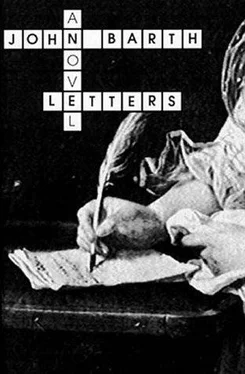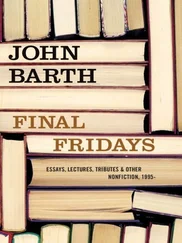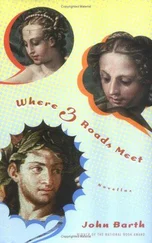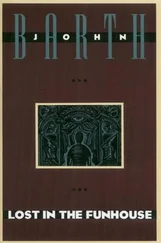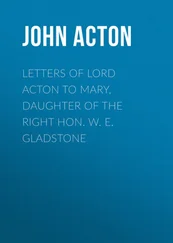My father’s Uncle Gadfly Junior had been his hero and closest friend; at the time of the canal plot Henry was old enough to be included in it, and had begged to share with Gadfly the riskiest assignment: mining the entrance locks at either end of the canal, where security was heaviest. Gadfly had the G at St. Catherines; my father wanted the Port Colborne T. But my grandfather forbade him, as a brand-new father himself, to place any of the explosives, and only reluctantly permitted him to stand watch over the transmitter at Port Robinson while he himself mined Lock N nearby, at the center of the canal.
Andrew’s target being closest at hand, he thought to reach it, plant his charge, and rejoin his son within an hour to await the dawn at the transmitter while the others were still being dropped off at one-mile intervals in both directions. Thirty minutes after their parting salute—“To the Second Revolution!” which meant different things to the several bombers — and before even my grandfather had slipped past the watchman and lockmaster at Port Robinson, all 25 charges went off together.
That is to say, there were three explosions: a tremendous one on the back road south from Port Robinson, where the truck carrying THE QUICK BROW group toward Port Colborne was about to discharge its first passenger (Comrade W ) near Welland; a similarly tremendous one on the road north from Port Robinson, where the truck carrying FX JMPD V LAZY G toward St. Catherines was about to drop off Comrade F near Allanburg; and a third, only one-twelfth as great but sufficient nonetheless to distribute Andrew Cook V over a considerable radius, within sight of the locks at Port Robinson itself.
And there are at least three explanations, (a) The detonation was an accident, caused by the coincidental transmission at 125 kc. of either an SOS from some distressed vessel in Lake Erie or Lake Ontario, or any other message containing either an S or letters from each of the three groups (i.e., THEQUICKBROW, N, and FXJMPDVLAZYG ). But there is no record of ships in distress in the canal area on that pleasant Thursday night or Friday morning. Coincidental transmission remains a possibility: a wireless operator just coming on watch, say, aboard any vessel near or in the canal, waking up his fingers with THE QUICK etc. My Tuscarora grandmother preferred this explanation.
(b) The saboteurs were sabotaged, suicidally, by one of their number. This was my father’s theory: that by a fatal patriotic rebroadcast of Marconi’s first transatlantic message, say, or some sufficient three-letter combination, A.B.C. V martyred himself to the Allied war effort, whether because his anarchism recoiled at the mounting totalitarianism of the Bolsheviks (the Romanovs had been murdered just two months earlier), or because his anarchism had all along been a cover for infiltrating subversive groups. To the objection that suicide was unnecessary to foil the plot (one letter from each of the truck-borne groups — a T and a G, say — would have done the trick), my father would reply either that not to have blown himself up would have blown my grandfather’s cover, or, more seriously, that inasmuch as it had been necessary to sacrifice his wife’s brother Gadfly, Andrew V had felt morally constrained to sacrifice himself as well. In support of his argument he adduced the fact that his father had handed him, at the last moment, “for safekeeping” while he mined the lock, the old Breguet pocketwatch passed on to him by his mother Henrietta.
But contemporary accounts of the event (I have read them all, especially since 1953, the “midpoint” of my own life, by when, alas, my father was eight years dead and unable to defend his theory against my new objections) maintain that the three explosions were separate not only in space but, slightly, in time, and while opinion on their exact sequence is less than unanimous, most auditors agree that the two big blasts preceded the smaller one by a little interval— boom boom, bang — and that the southerly boom was the earlier of the two. An ex-artillery officer at Port Robinson reported feeling “bracketed” by the booms and hit directly by the bang.
I have thought about this, and conclude that we may rule out the SOS theory, coincidental or otherwise, except possibly as the third signal. Likewise the theory of self-sabotage by any member of the group except, I reluctantly admit, my grandfather. Not impossibly he did destroy his comrades and thus himself: the quickest signal would have been a simple dot (E) to wipe out the southbound twelve, followed by a dot-dash (A) to detonate the northbounders, and either the N (dash-dot) or the S (dot-dot-dot) to do for himself. Or he could have tapped out any of at least seven English words: BAN, CAN, HAS, RAN, TAN, WAN, WAS, etc.
But I am struck by the reminiscence of an old Port Robinson telegrapher whom I interviewed on the subject some ten years ago. A religious man, he had been awakened by those blasts from dreams of a telegram from God, whose sender he recognized by the thunderous subscription of His initial. Awake, he forgot the text of the heavenly message (he was to spend the rest of his life vainly endeavoring to recover it, as I have tried in vain to recover the signal that blew my grandfather and his company to kingdom come), but he understood in immediate retrospect that the coded initial had been the blasts themselves. Boom boom bang: dash dash dot.
In my late adolescence and early manhood, when I too underwent the filial rebellion our line is doomed to, I did not agree with what I took to be my father’s politics. Of this, more in a later letter, my last, which I shall write on the eve of the 51st anniversary of this catastrophe and the dawn of our Second 7-Year Plan for the Second Revolution. I am less certain now than I was in those brash days that both of the foregoing theories or classes of theories about the Port Robinson explosions were wrong: that the truth was (c) that my father, a U.S. Secret Service undercover agent, either sabotaged the whole Welland Canal plot himself from his station at the master transmitter (the only one known to be both tuned to the proper frequency and positioned unequivocally within range) or — as my son Henry Burlingame VII firmly believes and gently suggests — that when H.B. VI heard the first two explosions and realized or imagined that A.C. V had blown up both truckloads of bombers, including his beloved Uncle Gadfly Junior, in outraged grief he sent the parricidal letter.
In whichever case, alone or between them, my father and grandfather monogrammed the Niagara Frontier visually with the apocalyptic Morse-code S : an aerial photograph would have shown the two large craters and the central smaller one as three dots, or suspension points… And acoustically they shook the heavens with the initial echoed down to me 35 years later by the Ontarian telegrapher’s recollection: the big G, not for God Almighty (with whom no Cook or Burlingame, whatever his other illusions, has ever troubled his head), but for the man who was to my father what Tecumseh and Pontiac were to my remoter ancestors: well-named Tuscarora, boom boom bang, Great-uncle Gadfly!
We approach the end of the line, lengthy as our letters. The Tuscaroras were “originally” a North Carolinian tribe so preyed upon by the white settlers (who stole and enslaved their children) that after losing a war with them in 1711-13 the survivors fled north to Iroquois territory, and the Five Nations became Six. The Tuscarora War coincided with the great slave revolt of 1712 in New York, mentioned in Andrew Cook IV’s third letter and by him attributed to the instigation of Henry Burlingame III, the Bloodsworth Island conspirator. Many white colonials feared a general rising of confederated Indians and Negroes, who might at that juncture still have driven them back into the sea. This ancient dream or nightmare, which so haunts our Sot-Weed Factor, was my Great-uncle Gadfly Junior’s obsession (His Christian name was Gerald Bray; he was early given his father’s nickname after his agitations, in the remnants of Iroquois longhouse culture, for the cause of Indian nationalism generally and Iroquoian in particular; he later took the name officially and passed it on to his own son). A better student of history than my father, he argued for example that the Joseph Brant who signed away the ancient Mohawk territory in the Treaty of 1798 was either an impostor or a traitor, and that thus the treaty was as invalid as the one signed by Tecumseh’s rivals with William Henry Harrison at Vincennes, and countless others. The Mohawks should reclaim their valleys; the Oneidas, Cayugas, Onondagas, and Senecas their respective lands, from the Catskills and Adirondacks through the Finger Lakes to Erie and Ontario. Bridges, highways, and railroads should be obstructed. The moves in Congress to confer U.S. citizenship on reservation Indians should be resisted as co-option. Common cause should be made with W. E. B. Du Bois’s NAACP (conceived at Niagara Falls, Canada), with the Quebec separatists, with American anarchists, Bolsheviks, et cetera, to the end of establishing a sovereign free state for the oppressed and disaffected in white capitalist industrialist economic-royalist America.
Читать дальше
